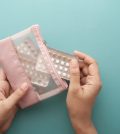- E. Coli Outbreak Linked to McDonald’s Quarter Pounders Widens to 75 Cases in 13 States; 22 Hospitalized
- Weight-Loss Surgeries Decline 25% as More Americans Turn to GLP-1 Meds
- Burger King, Other Fast Food Chains Also Pulling Onions Tied to E. Coli Outbreak
- CDC Confirms Second Human Bird Flu Case in Missouri With No Known Exposure to Farm Animals
- CDC Says Some People May Need Extra Dose of COVID Vaccine
- Wildfires Are Gaining Speed in Western U.S., Upping Threat to People
- People’s Brains Now Process Texts Almost as Quickly as Pictures
- There’s Still Confusion on How to Spot, Treat Severe Allergic Reactions
- What Works Best to Ease MS-Linked Fatigue? New Study Finds Out
- Are ‘Elimination Diets’ Much Help Against Child Eczema?
EPA Suggests Safer Flame Retardants


THURSDAY, Sept. 26Safer alternatives to a toxic flame retardant chemical are presented in a new report from the U.S. Environmental Protection Agency.
The findings can help manufacturers select substitutes for hexabromocyclododecane (HBCD) in polystyrene building insulation, according to agency officials.
“While EPA continues to support much needed reform of the Toxics Substances Control Act, EPA is taking steps now to address the public’s concern with certain flame-retardant chemicals, including making information available to companies to help them make decisions on safer chemicals,” Jim Jones, EPA’s assistant administrator for the Office of Chemical Safety and Pollution Prevention, said in an agency news release.
“The conclusions in this report are enabling companies who choose to move away from HBCD to do so with confidence that the potential for unintended consequences is minimized,” he added.
The draft report — Design for the Environment Alternatives Assessment — identifies two alternatives to HBCD for use in polystyrene insulation. One of the alternatives, a butadiene styrene brominated copolymer, is anticipated to be safer than HBCD and is currently in commercial production in the United States.
As part of a broader effort involving flame-retardant chemicals, the EPA in March identified 20 such chemicals for full risk assessment. This includes developing full risk assessments on four of these chemicals, among them HBCD.
The information from the full risk assessments on these four chemicals will be used to better understand chemicals with similar structures and characteristics. The EPA said that if it identifies potential risks, it will take appropriate risk reduction measures.
Development of these risk assessments will begin later this year, and draft risk assessments will be available for expert review and public comment in 2014.
More information
Here’s where you can find the EPA’s draft report on hexabromocyclododecane.
Source: HealthDay
Copyright © 2024 HealthDay. All rights reserved.








-200x224.jpg)

